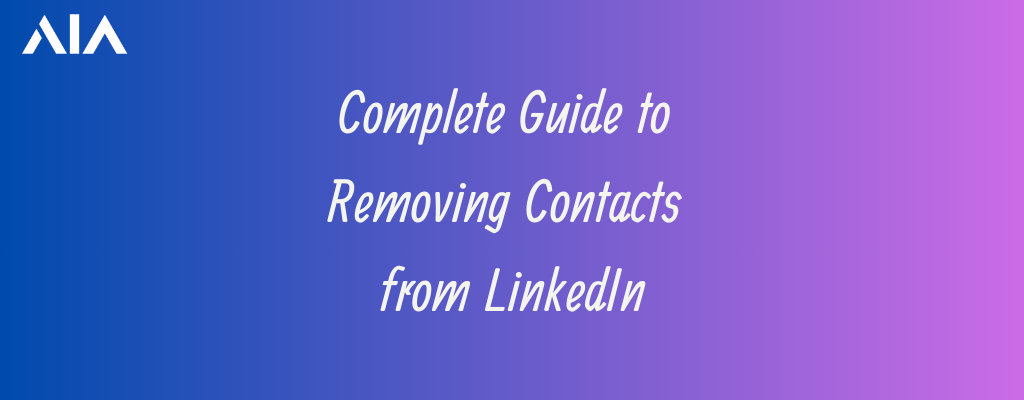Removing contacts from LinkedIn is a simple process that allows you to declutter your network, maintain professional focus, and protect your privacy. You can easily remove unwanted connections by following the steps outlined in this comprehensive guide. However, it is essential to consider the reasons behind your decision and the potential impact on your professional relationships. Building and managing a valuable LinkedIn network requires thoughtfulness, engagement, and a strategic approach to ensure you are connecting with individuals who align with your professional goals and aspirations.
Reasons for Removing Contacts from LinkedIn
1.1 Decluttering your network:
– Maintaining a focused network: As your LinkedIn network grows, it can become overwhelming to manage many connections. By removing contacts, you can streamline your network to include individuals more relevant to your professional goals.
– Enhancing privacy: Removing contacts from LinkedIn can help protect your personal and professional information from individuals you no longer wish to share it with.
1.2 Professional considerations:
– Changing career paths: As your professional interests evolve, you may find that some connections no longer align with your current goals or industry. Removing contacts allows you to create a network that reflects your professional direction.
– Negative interactions: If you have had negative experiences or interactions with certain contacts, removing them from your network can help maintain a positive and supportive online environment.
How to Remove Contacts from LinkedIn
2.1 Removing a single contact:
– Step 1: Log in to your LinkedIn account and navigate to the “My Network” tab.
– Step 2: Locate the contact you wish to remove from your network.
– Step 3: Click on the three horizontal dots next to the contact’s name to open a drop-down menu.
– Step 4: Select “Remove Connection” from the options provided.
– Step 5: Confirm the removal by clicking “Remove” in the pop-up window.
2.2 Removing multiple contacts:
– Step 1: Follow steps 1 and 2 from the previous section to access your network.
– Step 2: Click the checkbox next to each contact you want to remove. You can select multiple contacts at once.
– Step 3: Once you have selected all the contacts you wish to remove, click the “Manage Contacts” button at the top of the page.
– Step 4: From the drop-down menu, select “Remove Connections.”
– Step 5: Confirm the removal by clicking “Remove” in the pop-up window.
Etiquette and Considerations for Removing Contacts
3.1 Notifications and Visibility:
– When you remove a contact from LinkedIn, they will not receive a notification about the removal. However, if they try to view your profile or message you, they may notice that they are no longer connected with you.
– If you have many mutual connections with the contact you removed, they may notice the change in your connection status.
3.2 Communicating before removing:
– In some cases, it may be appropriate to communicate with the contact before removing them from your network. If the reason for removal is a misunderstanding or a minor disagreement, reaching out and discussing the issue can help resolve any misunderstandings and potentially salvage the professional relationship.
Managing Your LinkedIn Network
4.1 Building a valuable network:
– Quality over quantity: Instead of focusing on the number of connections, prioritize building meaningful relationships with individuals who can contribute to your professional growth and development.
– Engage with your network: Actively participate in discussions, share valuable content, and provide support and guidance to your connections. This will help strengthen your relationships and increase the value of your network.
4.2 Reconnecting with removed contacts:
– People change, and professional circumstances evolve. If you have removed a contact but realize reconnecting could be beneficial, you can send them a new connection request. However, it is essential to approach this with sincerity and explain why you believe reestablishing the connection would be valuable.
